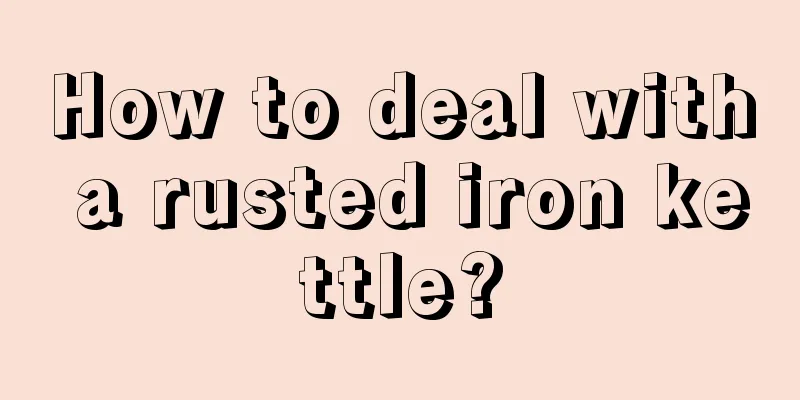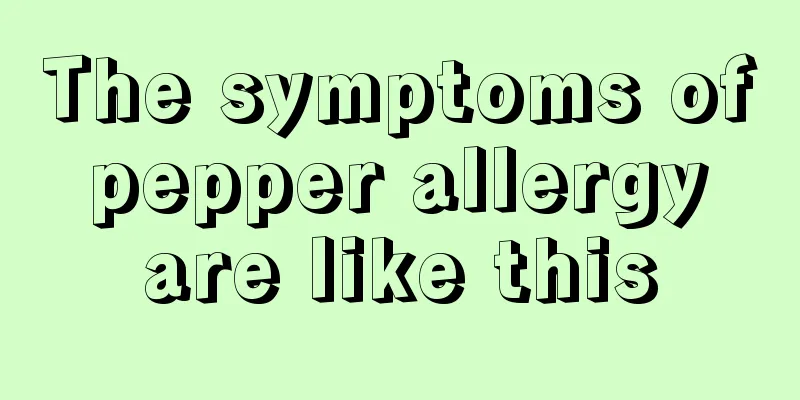How to deal with a rusted iron kettle?

|
In real life, iron kettles are a very common type of kettle. Frequently using iron kettles to boil water can supplement the iron needed by the body. At the same time, it can also supplement a nutrient element needed by the body, which is very good for the health of the body. However, long-term use of iron kettles will easily lead to rust, and rust on iron kettles will easily lead to a hydrogenated substance, which needs to be removed in time. You can use vinegar and lemon to wash it. How to deal with rusted iron kettle? The rust inside the old iron kettle is iron blocks formed by the oxidation of the kettle wall and water. It is not a naturally formed thick white scale layer. It has no value in protecting the inside of the iron kettle and will only affect the water quality and health of the kettle. If there is a large scale layer, it is not recommended to clean it, because it can protect the inner wall of the iron kettle from rusting and improve the water quality. If the rust on the surface of the pot does not affect our use, there is no need to clean it excessively. Just rinse it with water to wash away the dust. Excessive cleaning of the pot body will cause oxidation of the pot body to form a skin shell that has been damaged for nearly a hundred years, which we commonly call patina. It can protect the surface of the iron pot and prevent further rust. In addition, the iron kettle master has already treated the surface with rust prevention when casting the iron kettle, so there is no need to deliberately brush it. Rust is a general term for some iron oxides, usually red in color, formed by iron and oxygen in a humid environment. Different forms of rust are generated under different circumstances. Rust is mainly composed of ferric oxide hydrate Fe2O3?nH2O and ferric hydroxide (FeO(OH), Fe(OH)3). In chemistry, dilute acid solutions are often used to help remove rust, but iron kettles are used to boil water, so it is impossible to use these chemicals. It will harm the kettle and your body. We can use edible vinegar and lemon instead. Rust cleaning steps: 1. Soak First soak the iron kettle in water. After about half an hour, use a wire brush to vigorously brush the inside of the kettle to break up the rust. After brushing once, pour in 3/2 bottles of white vinegar directly, then fill it with water. Do not cover the kettle and soak it for 24 hours. 2. Brush After soaking for 24 hours, you can see that the rust has dissolved. At this time, pour out 2/3 of the original vinegar water, and use tools such as wire and toothbrush to brush it clean. After brushing, rinse with water to see the effect. When encountering large rust blocks, you can gently scrape them off with a dinner knife. After brushing all the rust, there will be some stubborn rust stains that cannot be brushed off no matter how hard you try, then you need to proceed to step 3. If it is almost clean at this point, there is no need to go to step 3. 3. Cook Take 2 slices of lemon, put them into the pot and cook on low heat for 3 hours, cover with a copper lid. If the water evaporates during the process, do not add cold water directly. Remember to add hot water, as thermal expansion and contraction will cause damage to the iron kettle. After 3 hours, don't rush to pour out the lemon water. Let them continue to soak for 2 hours. Then pour the lemon water into the basin, and then soak the copper lid in the basin. Finally, check the rust in the pot and use a toothbrush or other tool to brush the rust clean. If you can’t buy lemons, you can use tomatoes instead. After soaking and washing, you can see the change in water quality; boil the water 8 times, there will be improvement each time, and you can stop boiling when the water becomes clear. 4. Raise After several days of tossing and turning, the iron kettle has changed. After boiling water several times, see if the poured water is clear and rust-free. If it is, it can be used normally. But at this time, there is a strong iron smell in the kettle. My way to remove the iron smell is to directly put more than 100 grams of ripe Pu'er tea leaves into water and cook on low heat. Many people say that iron kettles will absorb the tea smell when boiling tea, so we use ripe Pu'er tea. The fermented tea smell is lighter. Tea tannins will form after boiling, which can remove the iron smell and protect the inner wall of the iron kettle. After the last round of tea boiling, the old iron kettle has been reborn. Boil water diligently several times to grow new scale as soon as possible, then a perfect old iron kettle will be more valuable. |
<<: What are the benefits of boiling water in an iron kettle?
>>: What is the correct way to do reverse abdominal breathing?
Recommend
What to do if your hands get spicy after washing chili peppers
Cooking is a very tedious process, but you can al...
Where is the Chinese medicine hospital that treats gastric cancer
Where are the Chinese medicine hospitals that tre...
5 kinds of facial expressions may kill you
Signs of illness: Red or purple nose The tip of t...
What are the dangers of cervical cancer
What harm does cervical cancer do to women? Many ...
Does it hurt when removing the drainage tube for breast cancer?
Does it hurt when the breast cancer drainage tube...
What are the hazards of salt to the human body
Do you still remember the stories our elders told...
How much does chemotherapy for colon cancer cost
How much does chemotherapy for colon cancer cost?...
My scalp feels hot when I dye my hair
Hair dyeing is a fashion, but because people go t...
Do you know the symptoms of spleen deficiency?
What are the symptoms of spleen deficiency? Many ...
Can I exercise if I have bile duct cancer
First, let's learn about what bile duct cance...
Crumble the rock sugar without microwave
What makes rock sugar different from other white ...
Washing your hair with cold water makes your neck feel like it's stiff
In most cases, most people wash their hair with w...
What are the health care massages?
Our living environment is getting worse and worse...
Symptoms of hemiplegia, four forms of manifestation
Hemiplegia, also known as half-body paralysis, ca...
Are tampons comfortable?
In recent years, tampons are increasingly being u...









